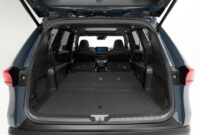Porsche 911 Dakar or Lamborghini Huracán Sterrato: difficult choice. In less than a month, Germans and Italians have presented the off-road interpretations of their sports cars to the motor world. Two different concepts that we analyze, point by point, to find out which way the balance falls.
One thing is certain: both the Porsche 911 Dakar and the Lamborghini Huracán Sterrato are more practical models than the vehicles on which they are based. You can use a Porsche 911 or a Lamborghini Huracánin your day to day, but believe us, both have their limitations. However, if we raise them a bit… garage slopes, road imperfections, speed bumps and potholes will hurt less.
engines
For him Porsche 911 Dakar, the German brand has borrowed the engine from the Porsche 911 GTS: a 3.0-liter six-cylinder block with twin turbocharging that generates 473 hp, which are distributed among the four wheels through an eight-speed PDK gearbox. The Lamborghini Huracan Sterrato is equipped with a V10 of 5.2 liters atmospheric that delivers 610 CV and has 560 Nm of pair.
The Lamborghini is more powerful, but slower: the Porsche goes from 0 to 100 km/h in 3.2 seconds and the Italian does the same in 3.4 seconds. However, the Sterrato is faster: although it is limited by its tires (just like the 911 Dakar) it reaches a top speed of 260 km/h while the German stays at 240 km/h.
Well it is true that Speaking as we are doing of SUVs, these figures do not make much sense: Unlike their road versions, the key to both models lies in how much fun they can be at relatively low speeds. What makes you feel better? Going 120 mph down a straightaway with radar lurking, or cruising down a dirt road at 40 mph with the engine roaring at 7,500 rpm?
off the asphalt
The Porsche 911 Dakar and the Lamborghini Huracán Sterrato have been specifically prepared to leave the asphalt, although each brand has done so with its own style. Lamborghini hasn’t specified the Sterrato’s ground clearance, but we know it gains 1.75 inches from the original Huracán: this should give you between 17 and 18 centimeters.
The 991 Dakar’s suspension raises it by five centimeters and the special lift system (which can be used at speeds up to 170 km/h) adds another three centimeters when necessary: that’s 8.12 centimeters more than a Porsche 911 Carrera, which should be given a total headroom of 20.5 centimeters. A figure higher than that of its Italian rival.
Both are equipped with all-wheel drive, and all of their systems—shock absorbers, ESP, and traction control—are set up to work on loose surfaces. They are also equipped with tires designed to perform both on the dirt and on the road: Pirelli P Zero Scorpions for the Porsche and Bridgestone Dueler AT002s for the Lamborghini, which feature run-flat function.
Lastly, the Lamborghini Huracán Sterrato is equipped with Lamborghini Urus rally mode and with new calibrations for Strada and Sport modes. The Porsche 911 Dakar debuts Rallye and Off-Road modes: The first of these is designed for rougher terrain and automatically engages the higher ride height, while the second is designed for loose and uneven surfaces and sends most of its power to the rear axle. Here the Germans may have some advantage, but we have also seen how the Italian SUV spends when things get complicated.
Design
The Porsche 911 Dakar has a design and an aesthetic that can hardly generate negative comments. If we parked it on the street, probably people I would think it is one more Porsche 911 with a nice decoration: The ground clearance, the black bumper inserts, the fixed spoiler or the discreet wheel arches would help us distinguish it from an original one.
The Lamborghini Huracán Sterrato, for its part, is faithful to its radical style which, in addition, is accentuated with elements such as the front LED spotlights (which are optional), the air intake on the roof or the coatings in black tone with special attention to the engine. Both offer extensive customization programs, but the Italian options are more disruptive.
Inside
Let’s go with the interior of both cars. The Porsche 911 Dakar is equipped with bucket seats as standard, has a 12-volt socket on the roof to mount some LEDs and eliminates the rear seats: the rest is the same as a standard Porsche 911, which is special in itself.
Inside the Lamborghini Huracán Sterrato we recognize some features of Audi, but it is, in essence, the same interior of a Lamborghini Huracán to which they have added, within the instrument panel, an inclinometer, a geographic coordinate indicator and a direction angle indicator without forgetting the new graphics for the Rally mode.
Price
Porsche will manufacture 2,500 units of the Porsche 911 Dakar and each one will be priced at 256,042 euros. 1,063 copies of the Lamborghini Huracán Sterrato will come out of Sant’Agata Bolognese: the Italians have not revealed their price, but, if someone has to ask how much a Lamborghini costs when buying it… they may not be part of your target audience.
Porsche 911 Dakar or Lamborghini Huracán Sterrato?
We return to the words with which we started: it is such a complex decision that we believe that the best solution would be to keep both, if we could. It only remains to wait that are successful enough to convince their brands that they should be a permanent part of their ranges and not just a special edition that appears very occasionally.









